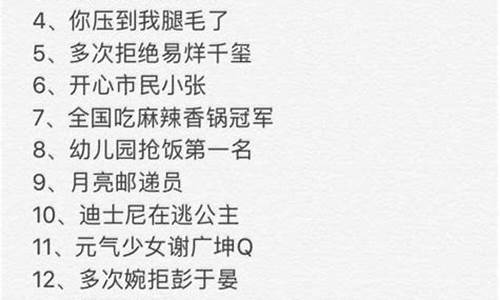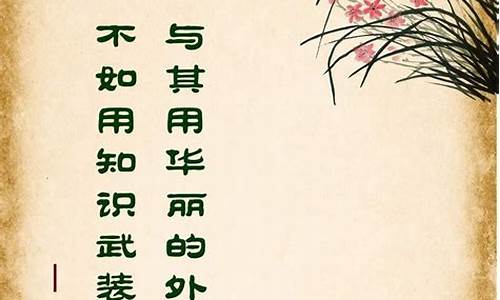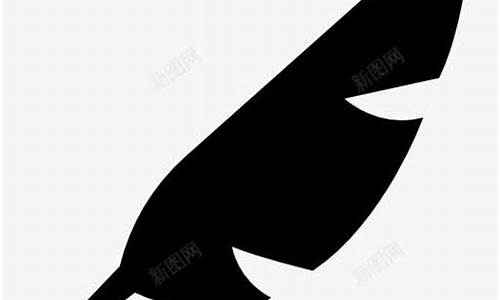您现在的位置是: 首页 > 文案大全 文案大全
句子是什么单词_句子的英语是可数名词吗
tamoadmin 2024-08-18 人已围观
简介1.可数名词和不可数名词的区别2.英语中什么是可数名词和什么是不可数名词?3.高考英语语法: 英语名词的可数性4.在英语中怎样分辨可数名词和不可数名词在英语中是不是一个句子里的名词是可数的就要变成复数?答:不一定的,如果前面有不定冠词a或者an,形容词性的物主代词(my, your, his, her, our, your, their, one‘s, its)等限定词的,可以用单数形式。可数名词
1.可数名词和不可数名词的区别
2.英语中什么是可数名词和什么是不可数名词?
3.高考英语语法: 英语名词的可数性
4.在英语中怎样分辨可数名词和不可数名词

在英语中是不是一个句子里的名词是可数的就要变成复数?
答:不一定的,如果前面有不定冠词a或者an,形容词性的物主代词(my, your, his, her, our, your, their, one's, its)等限定词的,可以用单数形式。
可数名词和不可数名词的区别
掌握了英语知识点能够提高学生的英语表达能力,下面是我为大家搜集整理的人教版初中英语知识点总结,欢迎大家阅读与借鉴,希望能够给你带来帮助。
初中英语知识点总结1:一、词类:英语词类分以下十种:名词、形容词、代词、数词、冠词、动词、副词、介词、连词、感叹词。
1、名词(n.): 表示人、事物、地点或抽象概念的名称。如:boy, morning, bag, ball, class, orange.
2、代词(pron.): 主要用来代替名词。如:who, she, you, it .
3、形容词(adj..):表示人或事物的性质或特征。如:good, right, white, orange .
4、数词(num.): 表示数目或事物的顺序。如:one, two, three, first, second, third, fourth.
5、动词(v.): 表示动作或状态。如:am, is,are,he,see .
6、副词(adv.): 修饰动词、形容词或其他副词,说明时间、地点、程度等。如:now, very, here, often, quietly, slowly.
7、冠词(art..):用在名词前,帮助说明名词。如:a, an, the.
8、介词(prep.): 表示它后面的名词或代词与其他句子成分的关系。如in, on, from, above, behind.
9、连词(conj.): 用来连接词、短语或句子。如and, but, before .
10、感叹词(interj..)表示喜、怒、哀、乐等感情。如:oh, well, hi, hello.
二、句子成分:英语句子成分分为七种:主语、谓语、宾语、定语、状语、表语、宾语补足语。
1、主语是句子所要说的人或事物,回答是“谁”或者“什么”。通常用名词或代词担任。如:I'm Miss Green.(我是格林**)
2、谓语动词说明主语的动作或状态,回答“做(什么)”。主要由动词担任。如:Jack cleans the room every day. (杰克每天打扫房间)
3、表语在系动词之后,说明主语的身份或特征,回答是“什么”或者“怎么样”。通常由名词、代词或形容词担任。如:My name is Ping ping .(我的名字叫萍萍)
4、宾语表示及物动词的对象或结果,回答做的是“什么”。通常由名词或代词担任。如:He can spell the word.(他能拼这个词)
有些及物动词带有两个宾语,一个指物,一个指人。指物的叫直接宾语,指人的叫间接宾语。间接宾语一般放在直接宾语的前面。如:He wrote me a letter . (他给我写了一封信)
有时可把介词to或for加在间接宾语前构成短语,放在直接宾语后面,来强调间接宾语。如:He wrote a letter to me . (他给我写了一封信)
5、定语修饰名词或代词,通常由形容词、代词、数词等担任。如:
Shanghai is a big city .(上海是个大城市)
6、状语用来修饰动词、形容词、副词,通常由副词担任。如:He works hard .(他工作努力)
7、宾语补足语用来说明宾语怎么样或干什么,通常由形容词或动词充当。如:They usually keep their classroom clean.(他们通常让教室保持清洁) / He often helps me do my lessons.(他常常帮我做功课) / The teacher wanted me to learn French all by myself.(老师要我自学法语)
☆同位语通常紧跟在名词、代词后面,进一步说明它的情况。如:Where is your classmate Tom ?(你的同学汤姆在哪里?)
三、构词法:英语构词法主要有:合成法、派生法和转换法。
1、合成法:如:spaceship, headache, basketball, playground等等。
2、派生法:
(1)派生名词:①动词+er/or ②动词+ing ③动词+(t)ion ④形容词+ness ⑤其他,如:inventor, learner, swimming, congratulation, kindness, carelessness, knowledge
(2)派生形容词:①名词+y ②名词+ful ③动词+ing/ed ④friendly ⑤dangerous ⑥Chinese; Japanese ⑦English ⑧French ⑨German ⑩国名+(i)an 如:snowy, sunny, hopeful, beautiful, interesting, follwing, daily(每日的),nervous, delicious
(3)派生副词:①形容词+ly ②其它,如:slowly, angrily, full→fully, good→well, possible→possibly等等。
3、转换法:
(1)形容词→动词,如:dry(干燥的)→dry(弄干), clean(干净的)→clean(打扫,弄干净),等等。
(2)动词→名词,如:look, walk, rest, work, study, swim, go, talk等等。
(3)名词→动词,如:hand(手)→(传递),face(脸)→(面对)等等。
(4)形容词→副词,如:early→early, fast→fast等等。
(5)副词→连词,如:when(什么时候)→(当……时候),等等。
(6)介词→副词,如:in(到……里)→(在里面;在家),on(在…上)→(进行,继续),等等。
初中英语知识点总结2:一、英语名词可分专有名词和普通名词两大类:
1、专有名词是个别的人、地、物、团体、机构等的专用名称。
专有名词中实词的第一个字母要大写。
如:Beijing, Tom, the People's Republic of China(中华人民共和国)
专有名词如果是含有普通名词的短语,则必须使用定冠词the。如:the Great Wall(长城)
姓氏名如果用复数形式,则表示该姓氏一家人(复数含义),如:the Greens( 格林一家人)。
2、普通名词是许多人或事物的共有名称。如:pupil, family, man, foot.
普通名词又分为可数名词和不可数名词。
▲可数名词是可以用简单的数词进行计数的名词,如: box, child, orange;
▲不可数名词是不可以用简单的数词进行计数的名词。如:water, news, oil, population, information .
二、英语可数名词的单复数:英语可数名词有单数和复数两种形式。
1、名词由单数变复数的基本方法如下:
①在单数名词词尾加s。如:map → maps,boy→ boys,horse→ horses, table→ tables.
②s,o,x ,sh,ch结尾的词加es.如:class→classes, box→boxes, hero→heroes, dish→dishes, bench→benches.
[注]:少数以o结尾的词,变复数时只加s。如:photo→photos, piano→pianos.
③以辅音字母加y结尾的名词,变y为i,再加es。如:family→families, city→cities, party→parties.
④以f或fe结尾的名词,变f或fe为v,再加es。如:shelf→shelves, wolf→wolves, life→lives, knife→knives.
2、不规则变化:man→men, woman→women, sheep→sheep,tooth→teeth, fish→fish, child→children, ox→oxen, goose→geese
不可数名词一般没有复数形式,说明其数量时,要用有关计量名词。如:a bag of rice→two bags of rice, a piece of paper→three pieces of paper, a bottle of milk→five bottles of milk.
三、名词所有格:
1、 名词所有格表示所属关系,相当于物主代词,在句中作定语、宾语或主语。其构成法如下:
(1)表示人或其它有生命的东西的名词常在词尾加's。如:Childern's Day(儿童节), my sister's book(我姐姐的书)
(2)以s或es结尾的复数名词。只在词尾加'。如:Teachers' Day(教师节)
(3)有些表示时间、距离以及世界、国家、城镇等无生命的名词,也可在词尾加's. 如:
today's newspaper(今天的报纸), ten minutes' break(十分钟的课间休息),
China's population(中国的人口).
(4)无论表示有生命还是无生命的东西的名词,一般均可用介词of短语来表示所有关系。如:
a fine daughter of the Party(党的好女儿).
2、[注解]:
① ‘s还可以表示某人的家或者某个店铺,如:my aunt's(我阿姨家), the doctor's(诊所)
② 两人共有某物时,可以用 A and B's 的形式,如:Lucy and Lily's bedroom(露西和丽丽合住的卧室)
③ “of+名词所有格/名词性物主代词”,称为双重所有格,如:a friend of my father's(我父亲的一位朋友), a friend of mine(我的一位朋友)
四、名词或代词作主语时和谓语之间的单复数的一致问题:
1、谓语和谓语基本保持单复数的一致,即:主语是可数名词单数或不可数名词时,谓语动词用单数形式:如:The computer was a great invention.(计算机是个了不起的发明)The water in the glass is very cold.(玻璃杯里的水很冷)
2、集体名词(如family, class, team, group, row, police, school等)做句子主语时,
① 如果表示整体概念,则谓语用单数形式,如:Class Three is a very good class.(三班是好班)
② 如果表示其中的所有成员时,则谓语用复数形式,如:Class Three he a map of China.(三
班有张中国地图)
3、Chinese, Japanese, fish, sheep, people等表示单个时谓语用单数,表示许多时,谓语用复数。如:There is a sheep in the yard.(院子里有只绵羊) / There are some sheep in the yard.(院子里有一些绵羊)
4、maths, news等虽然有s结尾,但不是复数,因此谓语仍用单数:The news is very exciting. (这个消息令人兴奋)
5、glasses, shoes, socks, trousers, gloves等名词往往用复数形式,故谓语用复数。如:
The trousers are very cheap and I want to take them.(裤子很便宜,我想买)
6、a lot of 后跟名词复数时谓语用复数形式,跟不可数名词时谓语用单数形式。如:A lot of students are playing baseball now.(现在有许多学生在打垒球) A lot of time was wasted on that work.(大量的时间花在了那个工作上)(被动句)
7、and 连接两个名词做主语时,谓语原则上用复数,但是两个名词若构成一个整体事物时,谓语则用单数。如:The teacher and his son are picking les now.(老师和他的儿子在摘苹果) / Fish and chips is very famous food. (鱼和薯条是一种出名的食品)
8、 there be 句型中be的单复数一般由靠近的名词决定。如:There is a table and four chairs in the room.(房间里有一张桌子和四张椅子)
9、用both…and…连接两个事物做主语时,谓语一般用复数。如:Both you and I are required to be here tomorrow.(你和我明天要求都来)
10、主语中含有with的短语时,谓语单复数由with之前的人物决定。如:A woman with a 7-year-old child was standing at the side of the road. (一名妇女带着一个七岁的孩子(当时)就站在路边)
11、either…or…或者 neither…nor…连接两个人物做句子主语时,谓语用就近原则。如:Either you or he is right.(要么是你对,要么是他对。/你和他有一个人是对的) / Neither you nor I am going there.(你和我都不打算去那里)
12、表示一段时间或长度概念的复数名词做主语时,谓语一般用单数。如:Two months is not a short time.(两个月不是个短时间)Two thousand kilometers is quite a long distance(距离).(两千千米是相当长的.一段距离)
13、主语中含有half of… / (three quarters)of… / all (of) the ….等词语时,谓语的单复数由名词确定,如:Over three quarters of the information on the Internet is in English.(因特网上四分之三以上的信息是用英语写的) / A third of the students were playing near the lake.(学生的三分之一(当时)正在湖边玩耍) / All of the water in these rivers has been polluted.(这些河流中的水已经被污染了)(被动句)
但是,population一词又有特殊情况: What's the population of China?(中国人口是多少?)(句子用单数) / Three quarters of the population in this city are Arabs(阿拉伯人).(这个城市四分之三的人口是阿拉伯人)(句子用复数)
五、部分名词用法辨析:
1、sport、game、match、race 的区别:sport通常指“户外运动”,以锻炼为主,概念较大;game意思是“运动、比赛”,不管户内户外还是脑力体力,指以胜负为主的运动;match意为“竞赛、比赛”,多指正式比赛;race主要表示“赛跑、、赛车”。如:People all around the world enjoy sports.(全世界的人都喜爱运动) / The 2008 Olympic Games will be held in Beijing.(2008奥运会将在北京举行)(被动句) / Our school football team won the league match(联赛).(我们学校足球队取得了联赛冠军) / They were strong and won the boat race.(汤他们很棒,赢得了划艇比赛)
2、festival、holiday、vacation的区别:festival“节日”,指喜庆的日子或持续一段时间的文娱活动;holiday(日、休息日),指法定日或风俗习惯,复数可以表示一个较长的期;vacation“期”,指学习或工作中一段长时间的休息。如:The Shanghai Television Festival will be held next month.(上海电视节将在下个月举行) / Sunday is a holiday and most people do not work.(星期天是个日,多数人不工作) / What are you going to do during the summer vacation/holidays?(在暑期你打算做什么事情?)
3、journey、tour、trip、trel的区别:journey指在陆地上(或海上或空中)进行的长途旅行,不知终点,含有辛苦的意思;tour指途中作短期逗留的巡回旅行,强调游览多处,常用来指观光等;trip通常指往返定时的短途旅行,如出差度等;trel多指长期或长途的观光旅行,尤其指到国外,没有明确目的地,也作不可数名词,指旅行这一行为。如:He made up his mind to make the journey to Dunhuang.(他拿定主意要去敦煌旅行)/ He has gone on a walking tour.(他步行观光去了) / He took several trips to Shanghai last yeaar.(去年他去了上海好几次) / Did you go to Santiago(圣地亚哥) during your trels?(旅行期间你去圣地亚哥了吗?) / Trelling through thick forests is dangerous.(在密林里边穿行是很危险的)
4、sound、noise、voice的区别:sound指各种声音;noise主要指“噪音”;voice指人的“嗓音”。如:The noise of the street kept me awake in the night.(街上的喧嚣声让我彻夜难眠) / All of a sudden there was the sound of shots and a cry.(突然间传来几声枪响和一声尖叫) / The singer has lost her ringing voice as a result of a bad cold.(因为感冒的缘故,这个歌唱家失去了她银铃般的嗓音)
5、fish的问题:指许多条鱼且不管种类时,用fish,单复数相同;fishes 指许多种类的鱼;fish指“鱼肉”时是不可数名词。如:There are many kinds of fishes in the pool. (池子里有很多种类的鱼)/ I prefer fish to meat.(与肉相比我更喜欢鱼)
英语中什么是可数名词和什么是不可数名词?
1、复数形式
可数名词是可以用来计数的名词。可数名词有单数和复数形式。如:desk-desks,le-les等。不可数名词是不可以直接用来计数的名词。不可数名词没有复数形式,只有单数形式。如:some bread,a little milk等。
2、定冠词不同
单数可数名词表示泛指时,前面要用不定冠词a(an),表示特指时,前面要用定冠词the;而不可数名词前不能用a(an)修饰,表示特指时,前面一定要用定冠词the。如:
He is a factory worker.他是一名工人。
No one can see air.没有人能看见空气。
3、表示方法不同
可数名词前可用具体的数词来表示具体的数量。如:two les,four books等。不可数名词前通常用单位词+of来表示数量。如:a piece of paper,three pieces of paper等
高考英语语法: 英语名词的可数性
英语的名词有可数名词与不可数名词之分。我们判断一个名词是可数与不可数是一个很重要的问题,因为它牵扯到在它的前面加不加冠词以及加哪种冠词,还有该词在句子当中适当的形式等问题。 那么,可数名词与不可数名词怎么区分呢? 一般来说,可数名词有单、复数之分。像表示人或事物的名词和集体名词等一般都是可数的。有时候,我们也可以在该词之前试着加一加基数词来进行判断。一般能用基数词数的名词,通常是可数名词,例如: a boy 一个男孩儿 three boys 三个男孩儿 some boys 一些男孩子 a desk 一张课桌 40 desls 40张课桌 many desks 很多课桌 a film 一部** some films 几部** a story 一个故事 two stories 两个故事 a song 一支歌 some songs 几首歌曲 an le 一个苹果 9 les 9个苹果 some les 一些苹果 people(复)人,人们 police(总称)警务人员 Chinese(单复同)中国人 物质名词或抽象名词一般都是不可数的。不可数名词没有单数和复数的区别,例如: water 水 ice 冰 tea 茶 meat 肉 milk 牛奶 age 年龄 time 时间 help 帮助 luck 运气 work 工作 有少数物质名词也有复数形式,不过它们的含义则有所不同了,例如: glass 不可数名词 玻璃 glasses 可数名词 眼镜 water 不可数名词 水 waters 可数名词 某个河流、湖泊的水 顺便说一下,有些物质名词本身也是可数名词,但其含义也有所不同了。例如: 物质名词 可数名词 glass 玻璃 a glass 玻璃杯 paper 纸张 a paper 报纸;论文 wood 木头 a wood 树林 gold 金子 a gold 金牌 A little 后接不可数名词 a few 后接可数名词 some/a lot of 后接可数或不可数名词 主要看后面的名词,时间啊,钱啊,温度啊,它们是可以分得很细很细的,换个角度说,你抓不住最小的单位,比如水,是分子构成,里面还有原子构成,你不知道它最小的是什么,所以用much, 当你如果知道最小的是什么了。比如书啊,牛啊,就是many 再比如fish作鱼时,是一只鱼,many 作鱼肉时,是much 这就是所谓的可数和不可数,可以数清的那就是可数,用many,不能数清的就用much
记得纳啊
在英语中怎样分辨可数名词和不可数名词
高考英语语法:英语名词的可数性
名词根据其可数性,可分为可数名词与不可数名词。一般说来,个体名词和大部分集合名词是可数的;而专有名词、物质名词、抽象名词以及少部分集合名词则通常是不可数的。但是这种区分只是大致的,原则性的,并不是绝对的。英语有些名词往往既是可数也可以是不可数的:
A:Would you like a cake? 要吃块蛋糕吗?
B:No, I don’t like cake. 不吃,我不喜欢吃蛋糕。
以上第一句用 a cake,这是把 cake 视为一块一块的“蛋糕”,所以它是可数的;而第二句只用 cake,这是把它当作物质名词看待, 所以它成了不可数名词。
下面我们按照名词的不同类别,分别讨论名词的可数性问题。
1. 专有名词的可数性
在通常情况下,专有名词具有“独一无二”的含义,因此它通常没有复数形式,即不可数。但是,专有名词的独一无二性通常是相对的,随着范围的扩大,这种独一无二性便会受到破坏。如在一个星期(week)内,只有一个星期六(Saturday), 一个星期日(Sunday)等,但是在一个月中甚至一年中,便有多个星期六,多个星期日了。所以我们有时可以说:
We he spent many hy Sundays there. 我们在那儿度过了许多个愉快的星期日。
又如,在一个小范围内,可能只有一个 Henry,但在一个较大的范围内则可能有多个 Henry, 因此我们有时会见到这样的句子:
There are five Henrys in our school. 我们学校有五个亨利。
另外,若专有名词转化成了普通名词,也可以是可数的:
Thousands of Lei Fengs he emerged in China. 中国涌现出了千千万万个雷锋。
2. 个体名词的可数性
个体名词表示的是一个一个的人或物的个体,所以它通常是可数的:
All of the students are interested in it. 所有的学生对此都很感兴趣。
There are trees on any side of the square. 广场的每一边都种有树。
3. 物质名词的可数性
由于物质名词在通常情况下不能分为个体,所以它通常是不可数的。但是,在某些特殊情况下(如表示种类等),有些物质名词也可以连用不定冠词或用复数形式:
wine 酒(不可数), a wine 一种酒(可数)
beer 啤酒(不可数), two beers 两杯啤酒(可数)
glass玻璃(不可数), some glasses 一些玻璃杯(可数)
4. 抽象名词的可数性
抽象名词是表示事物性质、行为、状态、感情等抽象概念的,因此它通常是不可数的。但是,有时抽象名词也可转化为具体名词(可数),表示具有某种性质的人或事物:
success 成功(不可数),a success 成功的人或事(可数)
pleasure 愉快(不可数),a pleasure 令人愉快的人或事(可数)
5. 集合名词的可数性
集合名词表示若干个体组成的集合体,它本身通常是可数的,其复数形式表示多个集合体:
a family 一个家庭,three families 三个家庭
a team 一个队, two teams 两个队
a crowd 一群人, crowds 多群人
不知道你是初中生,还是高中生,下面的资料几乎全面讲述了可数名词和不可数名词,如果是高中生,相信会收获颇丰的,如果是初中生,就适当选择阅读。
名词是表示人或物的名称的词,可分为普通名词和专有名词两大类。普通名词由表示某一类人或物的个体的个体名词、表示由若干个体组成的集合体的集体名词、表示无法分为个体的实物的物质名词、以及表示性质、行为、状态、感情等抽象概念的抽象名词组成;专有名词则是个人、地方、机构、组织等所专有的名称。
1.1 可数名词与不可数名词(Countable nouns and uncountable nouns)
从词的形式来看,英语名词分为可数名词与不可数名词。可数与不可数是英语名词的最基本类别。一般说来,个体名词是可数名词;物质名词、抽象名词和专有名词是不可数名词;集体名词则有的可数, 有的不可数。
1.1.1 可数名词与不可数名词(Countable nouns and uncountable nouns)
a. 可数名词有单、复数形式,单数形式可用a/ an; 不可数名词没有复数形式,单数形式前不用a/ an,但可用the或不用。例如:
Tom is a little boy.
There are 20 boys in our class.
Fish and poultry are usually not called meat.
I'll pay for the meat.
b. 名词的数影响句子中与之有关的谓语动词、限定词等。例如:
There are many/ some/ a lot of/ (a) few people in the park.
There are not many/ any people in the park.
There is much/ some/ a lot of/ (a) little/ a great deal of/ a fair
amount of water.
There is not much/ any water.
c. 下列名词常用作不可数名词:
accommodation, advice, baggage, behior, bread, cash, cloth,clothing, coal, equipment, fun, furniture, grass, harm, information, ink, knowledge, labour, laughter, leisure, luck, lightning, living, luggage, machinery, meat, money, news, paper, permission,
popularity, progress, rice, scenery, soap, sugar, tea, traffic, trel, trouble, thunder, weather, work等。
1.1.2 可数名词与不可数名词之间的相互转化(Conversion of uncountable into countable and countable into uncountable) 可数名词与不可数名词在一定条件下可以相互转化。
a. 物质名词一般是不可数的,但用来表示具体、个别事物,或表示各种不同品种时,通常是可数的,如different coffees,
various soaps。再看以下例子:
Do you care for tea?
Long-jing is a well-known tea.
We were not allowed to buy wine at lunch time.
I like wines.
b. 抽象名词一般是不可数的,但当它前后有修饰语表示"某一种"或"某一方面"的抽象概念时,其前可加a/ an。例如:
A good map would be a help.
It was a relief to sit down.
He had a good knowledge of mathematics.
c. 某些物质名词或抽象名词用作复数时,词义往往起变化。例如:
Light(光)trels faster than sound.
The lights(灯)are on.
He is a teacher of five years' experience(经验).
He is relating to us his experiences(经历)as an explorer.
d. 有些集体名词,如audience, committee, class, couple, crew,
family, team, , jury, party, public等,既可作单数,
又可作复数。把集体视为一个整体时,用作单数;指该集体
的各个成员时,用作复数。例如:
The audience is enormous.
The audience are enjoying every minute of the play.
His family is small.
My family are all doctors.
1.2 复数(Plural)
1.2.1 英语名词的复数构成(Formation of the plural of English nouns)
a. 英语可数名词的规则复数形式,是在词尾加-s。例如:
desks, maps, lakes, workers, fields, days, miles, pages, horses
b. 如词尾为ch, sh, ss或x,在词尾加-es。例如:
church→churches, bush→bushes, class→classes, box→boxes
c. 如词尾为-f或-fe,一般变为-ves; 有的加-s即可;而有的
则既可变为-ves,又可只加-s。例如:
calf→calves, half→halves, knife→knives, leaf→lees,
life→lives, loaf→loes, self→selves, shelf→shelves,
thief→thieves, wife→wives, wolf→wolves;
belief→beliefs, chief→chiefs, roof→roofs, safe→safes,
handkerchief→handkerchiefs;
hoof→hooves/ hoofs, scarf→scarves/ scarfs,
wharf→wharves/ wharfs
d. 如词尾为-y,则变y为i,再加-es。例如:
party→parties, factory→factories, family→families
e. 如词尾为o,有的加-es;有的加-s;有的则既可加-es,又可只加-s。例如:
echo→echoes, hero→heroes, potato→potatoes,
tomato→tomatoes;
radio→radios, piano→pianos, photo→photos, zoo→zoos;
buffalo→buffalo(e)s, cargo→cargo(e)s, mosquito→mosquito(e)s,
volcano→volcano(e)s
f. 表示字母、数字及其它词类的复数时,词尾常加-'s,有时只加-s。例如:
Her J's look like T's.
Since the beginning of the 90's, the town has changed a lot.
Don't interrupt me with your buts.
g. 一些不规则变化的名词复数形式:
child→children, foot→feet, goose→geese, man→men,mouse→mice, ox→oxen, tooth→teeth, woman→women
h. 有些以-s结尾的名词通常只有复数形式:
scissors, goods, trousers, clothes, pants, spectacles;belongings, findings, sings, surroundings;contents, mumps, measles, stairs
i. 有些集体名词用作复数:
cattle, police, people, militia, poultry
1.2.2 源自希腊文或拉丁文的外来词(Words of Greek or Latin origin)
一些外来词有以下的复数变化形式:
a. 词尾-is变成-es: analysis→analyses, basis→bases,crisis→crises
b. 词尾-um变成-a:
curriculum(课程)→curricula, datum(资料,数据)→data, medium(媒体)→media
c. 词尾-on变成-a:
criterion(标准)→criteria/ criterions , phenomenon→phenomena
d. 词尾-us变成-i:
nucleus→nuclei, stimulus→stimuli, syllabus(教学大纲)→syllabi
e. 词尾-a变成-ae:
antenna(天线)→antennae/ antennas,
formula(准则,公式)→formulae
f. 词尾-ix/ -ex变成-ices:
endix(附录)→endices, index(索引)→indices/ indexes
1.2.3 具有两种不同意义的复数形式(Two forms of the plural with
differentiated meaning)
有些名词的复数具有两种不同意思,一个与单数的意思相同,另一个则为别的意思。例如:
arms手臂(复数);武器
customs习惯(复数);关税
minutes 分钟(复数);记录
1.2.4 单数形式(Singular form)
a. 有的名词单复数同形:
Chinese, Japanese, deer, sheep, means, series, species,以及jin
(斤)、li(里)、yuan(元)等汉语译名。例如:
one sheep/ two sheep
b. 有些以-s结尾的学科名词或国名,作单数用:
phonetics(语音学),physics,optics(光学),politics;
the United States, the United Nations, the Netherlands等。
c. 有些和数词连用的名词,表示复数时仍保持单数形式:
a ten-pound baby, a twelve-foot pole, two dozen eggs,
three million dollars
1.2.5 复合名词(Compound nouns)
a. 句法复合名词的复数形式:
1)词尾加-s: bedrooms, bookcases
2)前后两个名词均需变为复数:
manservant→menservants, woman doctor→women doctors
3)少数复合名词可在第一或第二个词后加-s:
attorney general→attorneys general/ attorney generals
4)名词后加-s:
looker-on→lookers-on, son-in-law→sons-in-law
5)词尾加-s: grown-up→grown-ups,sit-in→sit-ins
6)动词-ing形式后加-s: coming-in→comings-in
b. 衔头、称谓的复数形式:
the two Browns, Drs.William and Henry Brown
1.3 单位名词(Unit nouns)
单位名词用来表示不可数名词的个体性,即使之能以个数计算;也能与可数名词搭配表示"一双","一群"等意义。除了搭配能力很强的piece和bit以外,还有表示形状、容积、重量以及表示成双、成群的单位名词。例如:
a piece/ bit of advice/ bread/ information/ news;
a bar of chocolate/ a cake of soap/ a loaf of bread/ a pack of cigarettes;
a bag of flour/ a basket of fruit/ a pound of butter/ a yard of fabric;
a couple of players/ a flock of birds/ a pair of shoes/ a swarm of bees等。
1.4 名词属格(Genitive nouns)
英语名词有两种属格:-'s属格和of-属格。例如:
What is the school's name?
What is the name of the school?
1.4.1 -'s属格和of-属格(-s genitive and of genitive)
a. 两种属格表示的意义
1)所有关系:
Mr Brown's suitcase (相当于Mr Brown has a suitcase.)
the trunk of an elephant (相当于An elephant has a trunk.)
2)主谓关系:
Dr Smith's answer (相当于Dr Smith answered---)
the claim of the buyers (相当于The buyers claimed---)
3)动宾关系:
the boy's punishment (相当于--- punished the boy.)
the occupation of the Island (相当于--- occupied the island.)
4)事物的来源:
the girl's story (相当于a story told by the girl)
the laws of Newton (相当于the laws advanced by Newton)
5)事物的类别:
a doctor's degree (相当于a doctoral degree)
women's magazines (相当于magazines for women)
6)同位关系:
the city of New York (相当于New York is a city.)
the pleasure of meeting you (相当于Meeting you is a pleasure.)
7)其它:
10 days' absence/ an absence of 10 days
(相当于The absence lasted 10 days.)
parts of the problem
(相当于The problem is divisible into parts.)
b. -'s属格的使用:
1)主要用于表示有生命的名词,如women's clothes, the horse's
mouth等。
2)用于国家机关、社团及一些地理名称,如the 's
plan, Europe's future等。
3)用于交通工具等,如the ship's bell, the car's engine 等。
4)用于表示时间、距离、价值和重量的名词,如a moment's
thought, seven hours' walk, six dollars' worth, two tons' weight
等。
5)常用于一些习惯用语中,如in my mind's eye, in life's
struggle等。
c. of-属格的使用:
主要用于表示无生命的名词,如the events of the decade, the
door of the hut等。
d. -'s属格的省略:
-'s属格后的名词有以下情况可以省略:
1)被修饰名词在句中已出现过,例如:
His car is faster than his father's (car).
2)被修饰名词表示某人的家,例如:
The doctor's (house) is on the other side of the street.
3)被修饰名词表示教堂、学校等公共建筑物,例如:
Joe lives near St. Paul's (Cathedral) in London.
4)被修饰名词表示某家店铺,例如:
Pickled vegetables are ailable at the grocer's.
1.4.2 双重属格(Double genitive)
兼有两种属格结构的后置修饰语叫做双重属格。
a. 双重属格用来表示的所有关系是人,不是物。例如:
a/ any friend of mine (=one/ any of my friends)
some daughters of Mrs Green's
(=some of Mrs Green's daughters)
two novels of Dickens' (=two of Dickens' novels)
上面的例子说明,双重属格可用a, any, some 及数词等修饰of
短语前面的名词,但不能用the,如不能说" the daughters of
Mrs Green's"。
b. 双重属格还常用this,that,these 和those 修饰of短语前面的名词, 以表示爱憎褒贬等情感。例如:
this idea of yours
that remark of Did's
these shoes of my sister's
those dirty hands of Peter's
俊狼猎英团队为您解答,祝您开心~








